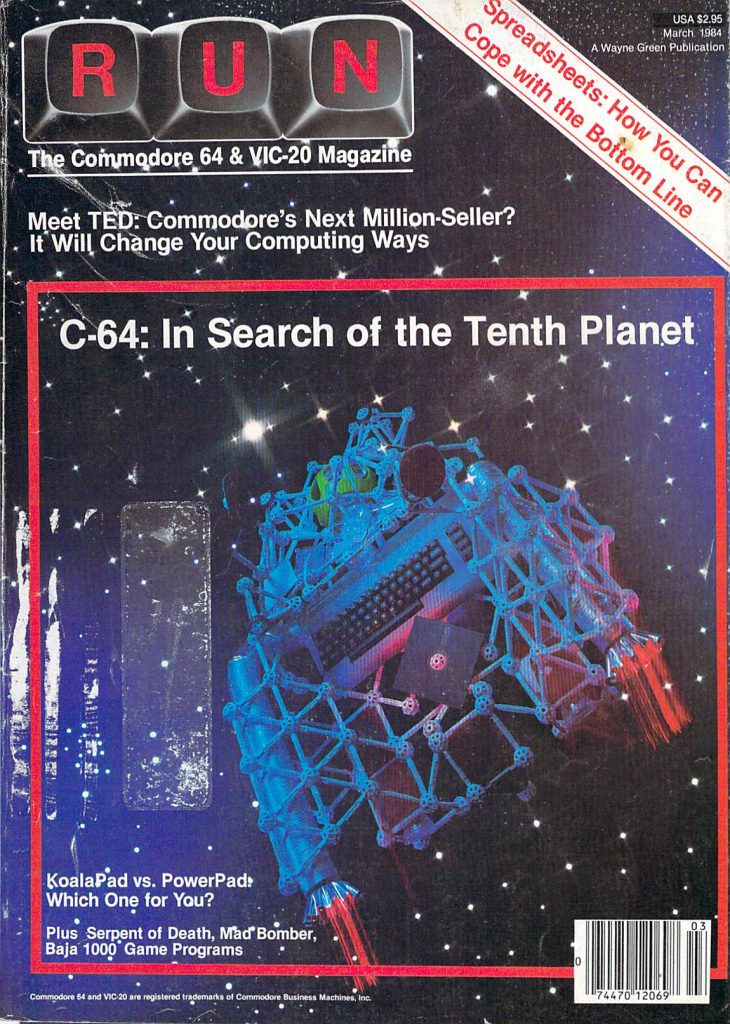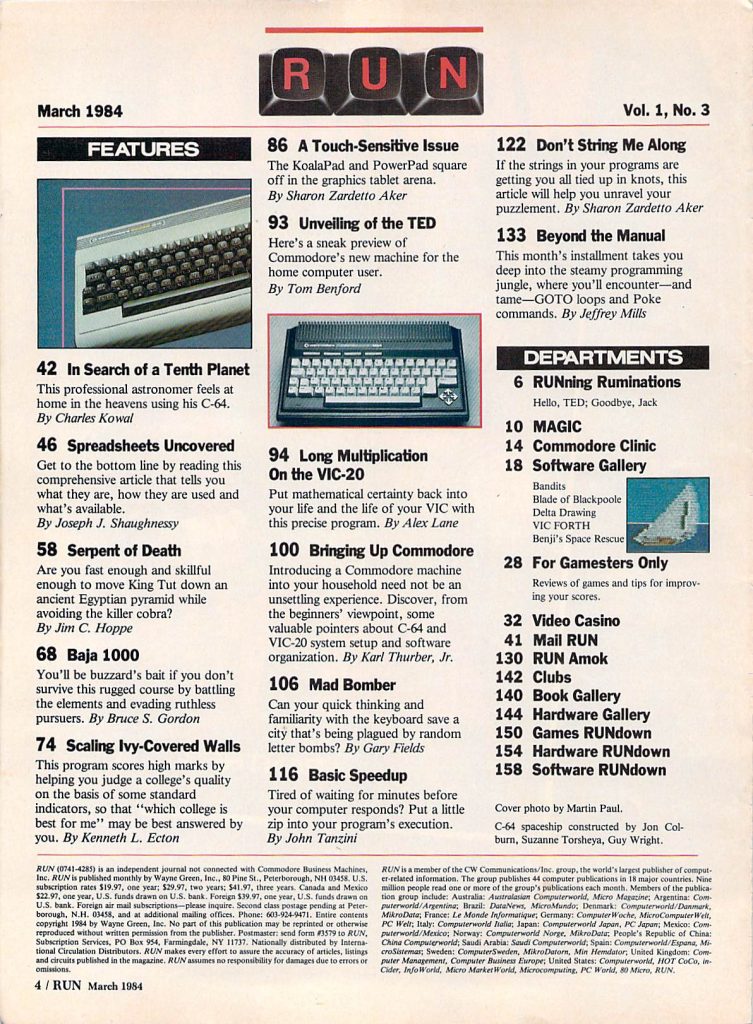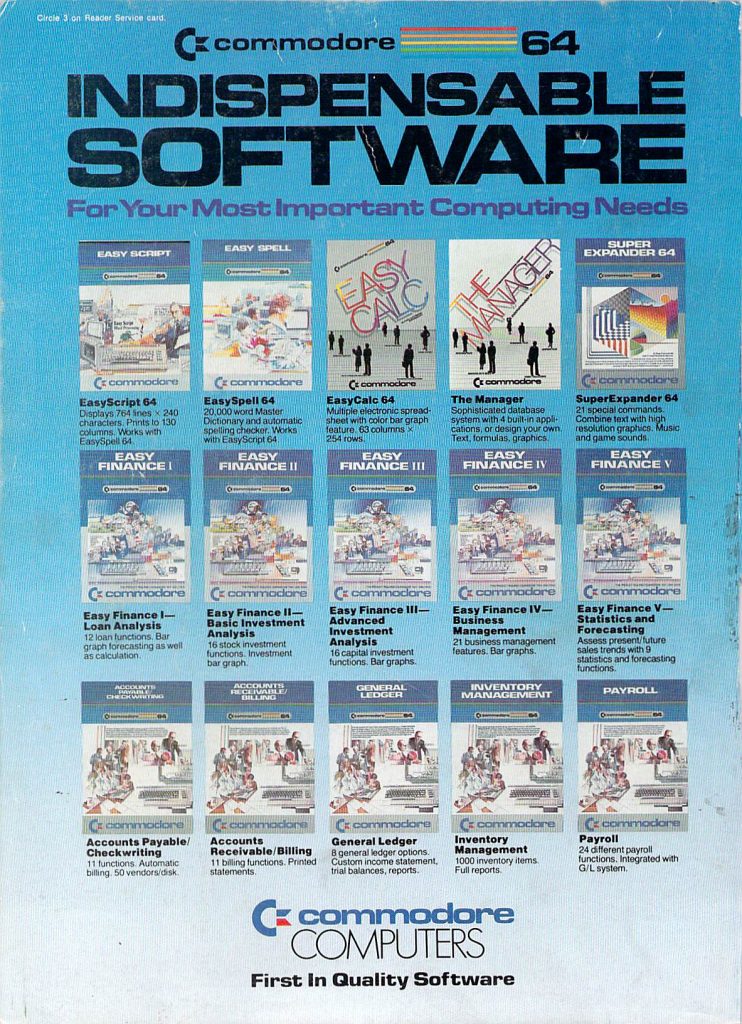Source: Compute! – Issue Number 17 – October 1981
Compute! is a home computer magazine that got its start all the way back in 1979. Later on, it tended to be less technical than something like Byte but by today’s standards, all computer magazines were somewhat technical when this issue was published in October 1981. At the time, Compute! covered computers based on the 6502 processors such as the Commodore PET, Apple II, Atari 400/800, VIC-20 and others. This issue includes:
Columns
- The Editor’s Notes – Atari reduces prices in the wake of the introduction of the VIC-20 (they would ultimately lose the price war later on vs. the Commodore 64), IBM enters the personal computer market, Atari wins school contract in Minnesota, and more.
- Computers and Society – Appropriate applications for home computers.
- Readers Feedback – A commentary on the maturing of the computer industry and Computer Aided Instruction.
- Ask the Readers – A question answered about the Apple II and TV interference and questions asked about video terminal options for an OSI computer, the 3040 Floppy Disk Unit for the PET, and more.
- Basically Useful BASIC: Automatic DATA Statements For CBM and Atari – A type-in program that converts machine language code into BASIC DATA statements.
- The Beginner’s Page – Organizing and processing data with computers.
- VIC-20 News – The latest released for the new VIC-20 including the VIC Graphics Printer from Axiom, a new disk drive (this would become the 1540), various memory expansion cartridges, an RS-232 adapter for connecting a modem, plus lots of software including Blackjack, Slither/Superslither, Biorhythm Compatibility, Space Math, Car Chase, Blue Meanies from outer Space, Programmer’s Aid (adds new BASIC commands), and more.
- Guest Commentary: A Software Publisher’s View on Software Pricing and Service Policies – A commentary on software licensing from a publisher’s perspective.
- What is a Modem, and Why Do I Need One? Part II – Part II of this multipart series includes information on how to use a modem, what type of modem to get, and technical modem details.
- More Machine Language for Beginners – A program that provides a way to secure private files is used as a way to teach machine language techniques.
- Undeleteable Lines – A technique for inserting lines of code in a BASIC program that cannot easily be deleted. Works on the Apple II and Commodore PETs.
- Inverting a Matrix – A program for the TRS-80 for inverting a matrix.
- New Products – A brief look at new products including the new 300bps AUTO-CAT modem from Novation, a TV/Monitor stand for the Apple II and Atari, VisiFile filing/database program for the Apple II, a software development system for the Commodore PET, Apple II, and Atari 400/800 from Eastern House Software, and more.
The Apple Gazette
- Budgeting On the Apple – A type in program for the Apple II that helps with budgeting tasks.
- Named GOSUBs – A machine language routine that allows you to use named GOSUBs (instead of just line numbers) in BASIC programs.
- A Tape “EXEC” For Applesoft: Loading Machine Language Programs Part II – A program that allows you to load both a BASIC program and ML routines it uses from tape.
- Switching Cleanly From Text To Graphics – Normally when switching from text to graphics mode on the Apple II, garbage will briefly appear on the screen. This bit of code that you can implement in your own programs prevents that from happening creating cleaner transitions.
- Interfacing the CCS 7710A Asynchronous Serial Card – Instructions for building a printer interface for the Apple II using the specified serial card.
The Atari Gazette
- Cassette Boot-Tape Generation From DOS 2.0S Binary Load File – A technique for creating a bootable tape on the Atari 400/800.
- Beware The RAMTOP Dragon – A technique for creating protected memory areas…especially from Atari’s memory management.
- Documented Atari Bugs – A detailed description of bugs in Atari OS and BASIC software.
- Graph It On The Atari – A type in program for creating plots and graphs.
- Extending Player Missile Graphics – A machine language program for enhancing the capabilities of Atari’s Player Missile Graphics (sprites).
- Atari 400/800 Variable Name Utility – A type in program that will display the contents of the variable name table which lets you know which variable names are already in use.
- Insight: Atari – How to use calculated GOTO and GOSUB statements.
- Overview: “Letter Perfect” Word Processing on the Atari – A review of Letter Perfect, a $149 word processor for Atari computers.
- Atari Disk File Dump – A type-in program that will provide a hex dump of any program on disk. This works with Atari 810 and 815 disk drives.
- Atari Program Library – A type-in program that helps you catalog your software by comparing disk contents with what is already in the database and adding whatever is missing.
The Pet Gazette
- Practical Pet Printing Primer for Perplexed Programmers – A type-in program that helps you to print out program listings in a reasonable format.
- Odds And Ends: A Fat Forty Bug – Illustration of a bug that sometimes occurs when running BASIC 4.0 programs on a PET with 12-inch screens that was originally written for 4-inch screens.
- Machine Language: What’s Your Sign? – Using signed vs. unsigned numbers.
- Train Your Pet To Run VIC Programs – A technique for getting VIC BASIC programs to run on the PET.
- Converting To Fat-40 – A tutorial for converting programs written for 9/10-inch PET 4032 to the 12-inch 40-column PET 4032.
- High Resolution Bar Graphs For The Pet – A type-in program for creating bar graphs on the PET
- Waking Up The PET Screen – A software routine that can create reverse field blinking anywhere on the screen at variable rates.
- Interfacing A BSR X-10 AC Remote Control System – Long before Alexa, X-10 systems were a way to create home automation. This article describes interfacing such a system with a Commodore PET.
- Using Non-Pin-Feed Forms In The 2022 – A way to print on standard checks and bank deposit forms using the 2022 printer.
- How And Why You Should Use PEEK (155) Instead Of Get – A better way to detect key presses when multiple keys are pressed at the same time (e.g. as might happen in two player games).
The SBC Gazette
- AIM 65 BASIC Floating Point Arithmetic From Machine Language – How to use floating point numbers on the SBC.
- A General Purpose BCD-To-Binary Routine – A type-in program that will convert a BCD number with any number of digits to a binary number.

…and more!







